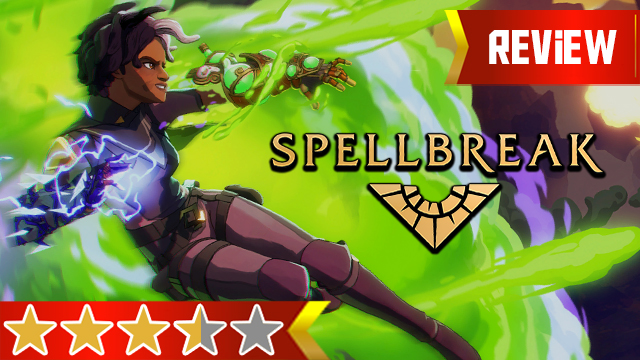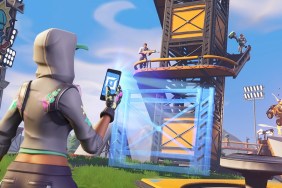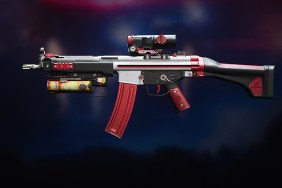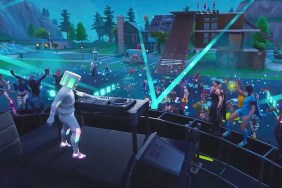SPELLBREAK REVIEW FOR PC, PS4, XBOX ONE, AND NINTENDO SWITCH. It’s 2020 and battle royale games are still king of the video game world. Enter Spellbreak with its own unique attempt at earning a slice of the BR pie. Trading guns for spells, developer Proletariat hopes that epic battlemage combat will be its winning formula. After testing the game on PC and Nintendo Switch, I’m happy to say that this free-to-play experience is well worth a try.
Battlemage royale
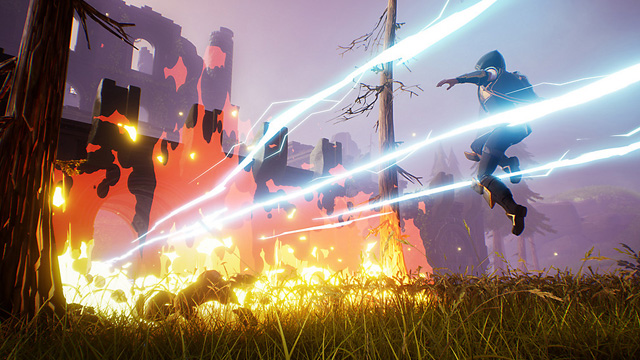
Following a brief tutorial, players fall down to the Hollow Lands with up to 41 other players in either a Solo, Duo, or Squad (three players) format. The aim of the game: be the last mage or team left standing. To increase chances of victory, players must search the map for loot in order to upgrade their abilities, equipment stats, and healing resources.
Each mage starts the round with a primary Gauntlet ability, with a choice of Fire, Frost, Lightning, Stone, Wind, and Toxic. Secondary Gauntlet abilities are looted from chest drops or from enemies and can be swapped out at any time. Players might start a round with a Lightning Primary and Toxic Secondary, but end the match with a Lightning Primary (unchangeable) and a Wind Secondary.
Magic mixture
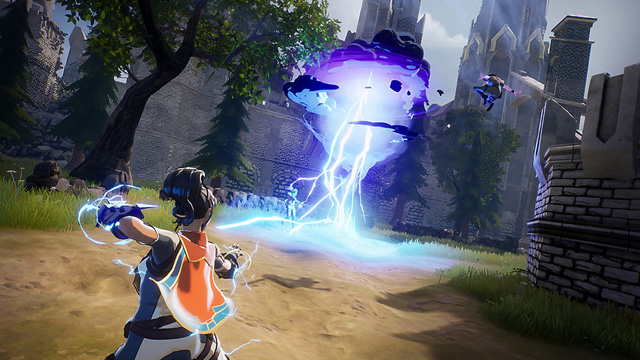
It’s the differences between the various Gauntlets and how they combine that makes Spellbreak‘s combat stand out. My favorite Gauntlet abilities are Stone and Frost. With Stone, I can focus on close-quarters combat that devastates players on the ground, while Frost allows me to fire from long-range. I can also combine the massive boulder fired from my Stone Gauntlet with a Frost spell to cover the rock with ice for additional damage. There are many combinations like this, adding another layer of strategy to combat.
Leveling up Talents with Scrolls is also key to staying alive in Spellbreak. Talents are perks that become more effective as they rank up. Players will need to quickly explore to get loot from chests and enemies in order to remain competitive at the later stages. While it’s still possible to win with unlevelled Talents and Gauntlets, it’s much more difficult. I like the way that Spellbreak rewards aggressive play, encouraging players to move around the map at speed, rather than camping and waiting for the end circle.
We can fly!

Helping players maneuver about the Hollow Lands map is the flying mechanic, as well as various movement abilities that help both in and outside of battle. Flying in Spellbreak is more of a hover, allowing players to quickly ascend mountainous terrain and buildings. It’s also key to dodging and weaving in combat. To prevent players from flying indefinitely, flight uses up the mana pool, which is also drained by spells. This makes for a careful balancing act that can be tricky to master. Drain mana by hovering for too long and players can find themselves stuck on the ground and unable to cast!
As we found during our preview, Spellbreak is “all about hovering, jumping high, and using movement abilities to zip around.” I’ve personally played a lot of arena shooters, and this game demands I use some of that old skillset. Mastering vertical combat and the prolonged tracking of enemies is what separates the good players from the not-so-good players.
While the skill ceiling is high, Proletariat has made an effort to gently welcome newcomers to the game. Bots can be found in the early matches, which makes for an almost guaranteed first game win. Human players are slowly introduced, mixed in with bots. A basic ping system allows for easy communication in Duos and Squad, which is where combat becomes truly epic, as teams of mages fire an assortment of spells at one another.
Get this map some magic

The weakest part of Spellbreak is the map. It’s just unremarkable with few memorable locations. I’d love to see the developer give the map more character, perhaps with different weather effects that impact how magic works in that area. The Hollow Lands could stand to be more magical in this magic-obsessed game!
Rather than dropping to my favorite location, I mostly just aim for the hot zones where good loot is guaranteed. Players are able to see the spots where enemies have chosen to spawn and so can choose to fight early for better loot, or avoid conflict to more slowly build up their character for later fights.
Despite the large map and potential for intense spell battles between many different players and teams, performance on PC is great and lower-end hardware should be just fine with the tunable settings and render resolution. Thanks to cross-progression, I also dabbled with the Nintendo Switch version, which was a little less stable in frame-rate, but still playable. I’d say it feels on par with Fortnite on Switch, which is surely a compliment.
Magical modern features

Cross-play is another big feature that Spellbreak boasts, but it’s forced on, so PC players can end up going up against Nintendo Switch users, which is a bit of a slaughter. While it’s nice to keep matchmaking times down, players should have the option to disable it, even if it means rounds are filled with more bots.
Monetization for this free-to-play game is inoffensive so far. Cosmetic items can be unlocked with the Gold premium currency. It’s one of the better implementations I’ve seen in a free-to-play title and doesn’t get in the way of the fun.
At the cost of nothing, players can try out Spellbreak across PC, PS4, Xbox One, and Nintendo Switch, with cross-play and cross-progression. This is fantastic to see!
Spellbreak Review | The Final Verdict

Spellbreak has launched with a foundation for greatness, with a fantastic combat system that I’m determined to master through many hours of play. However, to earn that attention post-launch support will be key. Proletariat already has a roadmap detailed and new modes like the 9v9 Clash game type sound promising. Here’s hoping the game gets enough attention from players and receives the support to make it truly shine.
Spellbreak was reviewed on PC (Ryzen 7 3700X, 32 GB RAM, RTX 2070) and is free-to-play.
-
Addicting and satisfying combat.
-
Fair free-to-play monetization.
-
Supports cross-progression and cross-play.
-
Promising roadmap, if supported long-term.
-
Forced cross-play can make things unbalanced.
-
Weak environments.
-
Interacting with and distinguishing different loot can be difficult.
